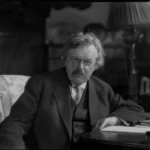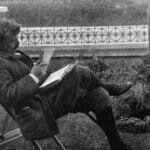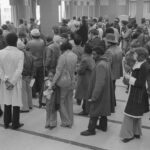A review of Between Two Worlds. By Elizabeth Marquardt.
Crown, 2005.
Since the 1960s, the Western world has embarked upon a novel and large scale social experiment: the demolition of marriage and the elevation of divorce. Never before in the West have so many marriages ended in divorce, and so many children been forced to endure the horrors of parental separation.
This seismic shift in marriage is as new as it is far-reaching. And because it is so recent, it has only been in the past few years that an entire generation of kids who have lived through divorce have grown up and are able to give their version of events.
And that story is uniformly damning: divorce hurts children, and it hurts them deeply and in a myriad of ways. And that hurt continues throughout adult life. Another clear message coming from these children is that there is no such thing as a “good divorce”.
Sure, in some cases divorce is the only option. But in the overwhelming majority of cases, divorce need not have been the option, and children of divorce desperately wished it did not happen. In truth, children of divorce “typically experience painful losses, moral confusion, spiritual suffering, strained or broken relationships, and higher rates of all kinds of social problems”. Their world, in other words, is turned upside-down.


Marquardt argues that while divorce is a way for adults to cope with their problems, it is not in the best interests of the child in most cases. Allowing for certain obvious exceptions, most difficult marriages can be remedied if the parents are willing to work at it. Indeed, most marriages that end in divorce – two-thirds of them – are low-conflict. Children do not benefit from parental divorce. Indeed, “the best possible outcome for children is to live in one home with their mother and father”.
And Marquardt has double reason to make these claims. One, she is herself the child of a divorce. And two, she has based her conclusions on a pioneering study of 1,500 young adults from both intact and divorced families. The study, conducted by her and sociologist Norval Glenn, have simply verified what most people know by common sense: divorce has numerous negative consequences for children, and many of those consequences stay with them for the rest of their lives.
This book examines in detail these findings. The actual facts and figures are there, but so too are numerous personal testimonies of those involved in the study. They put a human face on to the statistical data. And the face seen is a sad one indeed. Divorce impacts children profoundly, and the stories told here are tragic and moving.
The three year study made many disturbing discoveries. Meaty chapters explore the various negative outcomes for children of divorce. Consider just one area: the divided self of the child of divorce. The child is ripped out of a cohesive and unified environment (even where conflict takes place) and “suddenly inherits two distinct worlds in which to grow up”.
Says Marquardt, every marriage experiences conflict, but there is an underlying cohesion and solidarity to the marriage which is radically destroyed by divorce. In marriage two individuals “become one flesh,” but in divorce the parents are separated and become two people again. And the child – quite unprepared – is forced to deal with this new reality.
Adds Marquardt, “after a divorce the task that once belonged to the parents – to make sense of their different worlds – becomes the child’s. The grown-ups can no longer manage the challenge, so the child is asked to try.” But that is an adult responsibility which young children just cannot carry, a burden they cannot – and should not – bear.
As a result, children of divorce are much more likely than children of intact families to experience “confusion, isolation, and suffering”. They are forced to become little adults. Their childhood is ripped away from them, and they are forced to grow up way too soon.
In an intact family, the children are the centre, the nucleus, and the parents work to protect them and nurture them. But after divorce, the two parents themselves become the centre, and children are left to fend for themselves. Marquardt puts it this way:
“After a divorce, newly apparent adult vulnerabilities have a way of turning the family structure inside-out. Each parent moves to the center of his or her new world, and it’s the children who are now on the outside, keeping a wary eye on them, even trying to protect them.”
In effect, adults start acting like children while the child is forced to act like an adult. That is an intolerable weight for any child to have to carry. And on it goes for the child of divorce. One painful chapter after another highlights the tremendous pressures and strains foisted upon the child of divorce, and the long-term wounds they cause.
Marquardt makes it clear that not every divorce is bad, and that she is not trying to argue that divorced parents are bad people. But she does insist that divorce is primarily about adults and their needs, and almost never about children and their needs. Very few have asked how divorce impacts the children involved.
This book makes it quite clear that children are overwhelmingly losers in divorce. There is very little good at all that children receive from parental divorce. The radical restructuring of a child’s world after divorce should be our main consideration. But in most cases it is not.
Our world has been transformed from being a marriage-culture to a divorce-culture. Perhaps it is time that we became a child-friendly-culture. As Marquardt says, “we need to make sweeping changes to our thinking about marriage”. And this book is a great place to begin with such a rethink.
[957 words]




















Bill,
Many thanks to Elizabeth Marquardt, and to you for the review.
I am especially struck by the remarkable insight regarding parent and child role reversals, and turning the family inside out so the wrong people are protecting/nurturing the wrong people.
It reminds me of that early psych book “Games People Play” which identified “Parent”, “Adult” and “Child” roles which people played, and explored the harmonies and disharmonies involved.
John Angelico
Dear Bill, I have often found the words of Dietrich Bonhoeffer helpful, both for myself and friends whilst going through marital turbulence: “Marriage is more than our love for each other. It has a higher dignity and power, for it is God’s holy ordinance, through which he wills to perpetuate the human race till the end of time. In our love (between spouses) we see only our two selves in the world, but in marriage we are a link in the chain of the generations, which God causes to come and to pass away to his glory, and calls into his kingdom. In our love we see only the heaven of our happiness, but in marriage we are placed at a post of responsibility towards the world and mankind. Our love is our own private possession, but marriage is more than something personal – it is status, an office.” And I would add that needs defending at all costs.
David Skinner
Bill,
I agree with you that it would be better if married partners could stay together for life, particularly if young children are involved.
But what is the solution if the partners are no longer in love with one another? Should they pretend for the children’s sake that everything is OK? Kids aren’t stupid.
How do you know that “in the overwhelming majority of cases, divorce need not have been the option”? What other option is there if a relationship has broken down? Divorce is a huge step, emotionally and financially, and I can’t imagine that anyone would go down that path if there was an alternative.
I know that the statistics indicate that the divorce rate is high. But I look around my friends, acquaintances and workmates and I am hard put to think of anyone that has divorced. I truly wonder sometimes where these statistics come from.
Alan Simpson, Queensland (still happily married after 30 years)
Thanks Alan
But as Bonhoeffer once remarked, it is not love that keeps a marriage going, but marriage that keeps love going. “Falling out of love” as you put it, and relationship breakdown, are both quite fixable if couples are willing to try. But too many just give up far too easily.
While it is great that you are still married, and your acquaintances are too, the figures are quite clear: one out of two marriages end in divorce in the US, and one out of three in Australia. We live in a divorce culture. And we live in a throwaway culture. If the car gets a bit old, get rid of it and get a new one. If our couches are a few years old, get new ones. If our marriage is not quite all we want, abandon ship and look for greener grass elsewhere.
Since the liberalization of divorce laws in the West, beginning in the 60s, divorce rates have skyrocketed. Divorce is a huge problem. You might want to read some of the other articles I have penned on this subject in the ‘divorce’ section.
Bill Muehlenberg, CultureWatch
How can we expect people to honour business contracts when thanx to the corrupt anti-Christian Lionel Murphy, there needs to be no attempt to honour the marriage contract?
Jonathan Sarfati, Brisbane
Alan Simpson 19.4.07 / 11pm wrote: “Bill … How do you know that ‘in the overwhelming majority of cases, divorce need not have been the option’? What other option is there if a relationship has broken down?”
There are always two options: a) give up or b) try to mend the relationship.
However, the major shift towards ‘disposable relationships’ which Bill identified in his reply means that both members of the couple consider the effort to repair as being too costly in terms of personal ego, psychological ‘self-esteem’ etc. because it involves the need to say “I’m sorry, I sinned.”
I have no doubt that silly film “Love Story” has something to do with it since it gave us that maudlin expression “Love means never having to say you’re sorry”. It took another entire film (Barbra Streisand’s ‘What’s Up, Doc?’) to debunk that myth.
Consequently, by means of dubious logic, the palatable choices are reduced to one.
Alan also says, “Divorce is a huge step, emotionally and financially, and I can’t imagine that anyone would go down that path if there was an alternative.”
Often, separation comes as a short-term solution to a seemingly intolerable situation. The decision is made as a result of a “last straw” event and often in strained circumstances, under emotional tension.
Apart from the cases of serious abuse, where I would most likely agree there are fewer alternatives, the next decision to move from separation to divorce is coloured by the strain of the first decision to separate.
I have only seen two divorces that I could in any way describe as “better than average.”
In one, the husband and wife agreed to never ever run each other down before the children (and they stuck with that decision), and the children stayed with their mother entirely until they were at least 16, and could then choose with whom they wanted to live.
In both, the decision was to still uphold the ideal of marriage as ’till death us do part’ – the partners remained single thereafter.
So other alternatives are possible, just rarely employed.
John Angelico
As a school counsellor, I can say with certainty that divorce absolutely rips the hearts out of children. Whilst the parents are also hurting, they have adult (although they often don’t act as such) ways of coping with such trauma. Children have no such resources. If more adults put the needs of their children first and themselves second, I know that I would spend far less time in my counselling office!
George Kokonis